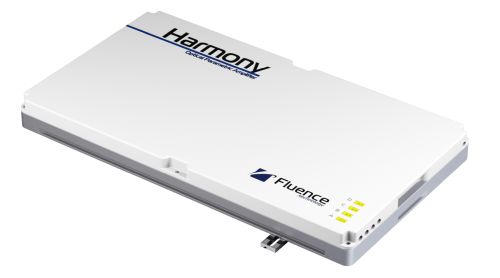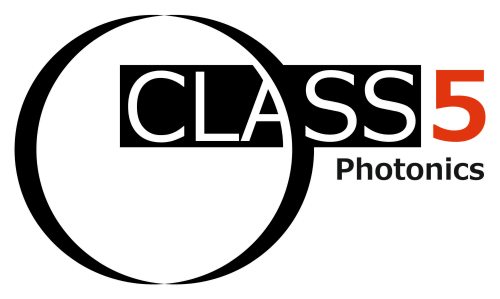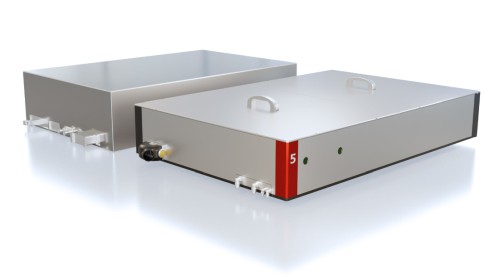divided-pulse amplification (original) (raw)
Acronym: DPA
Definition: a method of amplifying intense ultrashort pulse while avoiding excessive nonlinear effects
Categories:  light pulses,
light pulses,  methods
methods
Related: optical amplifiersultrashort pulsesnonlinearitiesnonlinear pulse distortionlaser-induced damagechirped-pulse amplificationDivided-Pulse Amplification
Page views in 12 months: 407
DOI: 10.61835/xvv Cite the article: BibTex BibLaTex plain textHTML Link to this page! LinkedIn
Content quality and neutrality are maintained according to our editorial policy.
📦 For purchasing ultrafast amplifiers, use the RP Photonics Buyer's Guide — an expert-curated directory for finding all relevant suppliers, which also offers advanced purchasing assistance.
Contents
What is Divided-pulse Amplification
Divided-pulse amplification [3] is a technique introduced for mitigating the problem of excessive nonlinear phase shifts in amplifiers for ultrashort pulses. Such phase shifts can result from the high peak power of amplified pulses when these propagate e.g. in the gain medium of an amplifier device. They can result in significant spectral broadening and distortion of the pulses, or even in optical damage of the amplifier.
Principle of Divided-pulse Amplification
The basic principle of divided-pulse amplification is to divide each pulse into a sequence of several (or even many) pulses before amplification, and to recombine the pulses after amplification. In principle, this pulse division could be achieved by using beam splitters (e.g. partially reflective dielectric mirrors), but the recombination would then be difficult due to the high required accuracy of path lengths. Therefore, the proposed technique for splitting and recombining is one which was invented much earlier [1]. A linearly polarized pulse is split into two pulses by sending it through a birefringent crystal, with an angle of 45° between the original polarization direction and the optical axis of the crystal. The crystal length is chosen large enough such that the group velocity mismatch leads to a relative time delay which is substantially larger than the pulse duration. (Time delays of several picoseconds can easily be obtained with reasonable crystal lengths.) The method can then be repeated with additional crystals, which are chosen to be longer than the first one — ideally, the crystal length is doubled in each step, obtaining an equidistant pulse train. The orientation of the optical axis also always changes by 45° for each crystal.

Figure 1: Setup of an amplifier based on divided-pulse amplification. The pulses make a double pass through a fiber amplifier, and the Faraday rotator (FR) separates the amplified pulses from the input pulses at a polarizing beam splitter (PBS), even if the fiber is not polarization-maintaining.
Recombination (after amplification) is then possible e.g. by sending the pulses in the reverse direction through the same sequence of crystals, after rotating their polarization by 90°. Ideally, that rotation is performed with a Faraday rotator; in that case, any polarization changes due to birefringence of the fiber are compensated.
An alternative solution is to use a second set of crystals after a single pass through the amplifier fiber. Interestingly, it is not necessary to match the crystal lengths to a fraction of a wavelength, which would be difficult to achieve; it is only that the recombined pulses will then not be linearly polarized. It may actually occur that the pulse distortions in the amplifier also affect the polarization of the recombined pulses.
As the number of pulses is doubled with each crystal, 5 crystals can already generate 25 = 32 pulse copies. In principle, 10 crystals would already allow for 210 = 1024 pulses, but at least some of the crystals would then have to be very long. In the picosecond regime, a 32-fold peak power reduction may sometimes be sufficient, whereas for femtosecond pulses one would often desire much more.
Comparison with Chirped-pulse Amplification
An alternative (older and more common) method for mitigating the problem of excessive nonlinear phase shifts is chirped-pulse amplification, where the pulses are dispersively stretched, then amplified (while having a moderate peak power), and then recompressed in a dispersive compressor such as a pair of diffraction gratings.
The two methods differ in various respects:
- For relatively long (picosecond) pulses, chirped-pulse amplification (CPA) requires impractically large amounts of dispersion. This problem does not exist with divided-pulse amplification (DPA).
- For fairly short (femtosecond) pulses, the effect of pulse broadening via chromatic dispersion of the birefringent crystals can become problematic with DPA, even though the use of optimized materials may allow for significant further improvements. (For shorter pulses, shorter crystals may be used, but this does not fully compensate the effect of shorter pulses, since the sensitivity of pulses to dispersion scales with the inverse square of the pulse duration. The effect of optical nonlinearities scales in a more benign manner.)
- The loss of pulse energy can be significantly lower with DPA than with CPA with a pair of diffraction gratings.
- Concerning alignment, CPA can be difficult when a pair of diffraction gratings with large dispersion is used. This problem does not exist with DPA.
In conclusion, it appears that chirped-pulse amplification is generally more suitable for pulse durations far below 1 ps, whereas divided-pulse amplification offers advantages for longer pulses. The decision regarding a particular method can, however, also depend on other circumstances.
It is generally not practical to combine the original concept of divided-pulse amplification with chirped-pulse amplification, since the latter requires rather long chirped pulses, so that a huge birefringence and/or very long birefringent optical parts would be required to avoid interference effects in divided-pulse amplification. One requires other means for creating sufficiently large time delays, such as cascaded Mach–Zehnder-type beam splitters/combiners [2, 6].
Frequently Asked Questions
This FAQ section was generated with AI based on the article content and has been reviewed by the article’s author (RP).
What is divided-pulse amplification (DPA)?
Divided-pulse amplification is a technique for mitigating excessive nonlinear effects in ultrashort pulse amplifiers. It involves splitting each pulse into a train of lower-energy pulses before amplification and recombining them into a single intense pulse afterward.
What problem does divided-pulse amplification solve?
It solves the problem of excessive nonlinear phase shifts that occur when amplifying high-peak-power ultrashort pulses. Such phase shifts can cause spectral and temporal distortion of the pulses or even optical damage to the amplifier.
How are pulses typically split and recombined in DPA?
A common method uses birefringent crystals. An input pulse is split into two orthogonally polarized pulses with a time delay. A sequence of such crystals creates a pulse train, which is recombined by passing it through the same crystals in reverse after a 90° polarization rotation.
When is divided-pulse amplification preferred over chirped-pulse amplification (CPA)?
DPA is often preferred for amplifying longer pulses (picosecond regime), where CPA would require impractically large dispersive elements. Conversely, CPA is generally more suitable for shorter pulses in the femtosecond domain.
Suppliers
Sponsored content: The RP Photonics Buyer's Guide contains 33 suppliers for ultrafast amplifiers. Among them:
⚙ hardware
Find harmony in four perfectly synchronised and precisely tunable wavelength outputs produced by the Fluence Harmony Optical Parametric Amplifier (OPA).
Fluence Harmony is a device that precisely converts ultrafast pulses of one band (e.g. 1030-nm pulses coming from Fluence Jasper) into a set of pulsed laser beams tunable in an extremely broad spectrum of wavelengths, ranging from 210 nm up to 2600 nm. All automated, all software-controlled.
A growing number of ultrafast spectroscopy techniques has prompted the need for a robust and reliable, self-diagnostic device like Harmony. The optical parametric amplifier is fully compatible with all femtosecond lasers and provides automated tuning across the basic tuning range.
⚙ hardware
Class 5 Photonics delivers ultrafast, high-power laser technology at outstanding performance to advance demanding applications from bio-imaging to ultrafast material science and attosecond science. Our robust optical parametric chirped pulse amplifiers (OPCPA) provide high-power, tunable femtosecond pulses at user-friendly operation.
Features of the White Dwarf OPCPA 5 W:
- compact and user-friendly
- CEP stability available
- pumped by Coherent Monaco industrial femtosecond laser
- high-performance, ultrafast OPCPA
- pump-probe configuration
- pumped by Yb-based laser up to 300 W and 3 mJ
- our award-winning flagship product
- highest average power OPCPA for demanding applications
- pumped by kW-class Yb:YAG Innoslab amplifiers or thin-disk lasers
⚙ hardware
Based on Cycle's own femtosecond fiber lasers, the company also offers fiber-based amplifiers (EDFA) with a center wavelength of 1550 nm to 1700 nm. This variant of the SOPRANO-CA is a very attractive solution to amplify the output of beam arrival monitors in synchrotron or FEL facilities, for example. Other custom-made fiber amplifiers are available upon request.
Bibliography
| [1] | H. E. Bates, R. R. Alfano and N. Schiller, “Picosecond pulse stacking in calcite”, Appl. Opt. 18 (7), 947 (1979); doi:10.1364/AO.18.000947 |
|---|---|
| [2] | S. Podleska, “Verfahren und Vorrichtung zum Strecken und Rekomprimieren von optischen Impulsen, insbesondere von Laserimpulsen hoher Intensität”, DE Patent 102006060703A1 (2006). |
| [3] | S. Zhou, F. Wise and D. G. Ouzounov, “Divided-pulse amplification of ultrashort pulses”, Opt. Lett. 32 (7), 871 (2007); doi:10.1364/OL.32.000871 |
| [4] | L. J. Kong et al., “Generation of megawatt peak power picosecond pulses from a divided-pulse fiber amplifier”, Opt. Lett. 37 (2), 253 (2012); doi:10.1364/OL.37.000253 |
| [5] | Y. Zaoter et al., “Femtosecond fiber chirped- and divided-pulse amplification system”, Opt. Lett. 38 (2), 106 (2013); doi:10.1364/OL.38.000106 |
| [6] | M. Kienel et al., “Analysis of passively combined divided-pulse amplification as an energy-scaling concept”, Opt. Express 21 (23), 29031 (2013); doi:10.1364/OE.21.029031 |
| [7] | A. Klenke et al., “Divided-pulse nonlinear compression”, Opt. Lett. 38 (22), 4593 (2013); doi:10.1364/OL.38.004593 |
| [8] | E. S. Lamb et al., “Divided-pulse lasers”, Opt. Lett. 39 (9), 2775 (2014); doi:10.1364/OL.39.002775 |
| [9] | Q. Hao et al., “Divided-pulse nonlinear amplification and simultaneous compression”, Appl. Phys. Lett. 106, 101103 (2015); doi:10.1063/1.4914882 |
| [10] | F. Lesparre et al., “Yb:YAG single-crystal fiber amplifiers for picosecond lasers using the divided pulse amplification technique”, Opt. Lett. 41 (7), 1628 (2016); doi:10.1364/OL.41.001628 |
| [11] | B. Webb et al., “Divided-pulse amplification to the joule level”, Opt. Lett. 41 (13), 3106 (2016); doi:10.1364/OL.41.003106 |
| [12] | F. Guichard et al., “Coherent combining efficiency in strongly saturated divided-pulse amplification systems”, Opt. Express 24 (22), 25329 (2016); doi:10.1364/OE.24.025329 |
| [13] | M. Edelmann et al., “All-polarization-maintaining divided pulse fiber oscillator mode-locked with the optical Kerr effect”, Opt. Lett. 46 (24), 6083 (2021); doi:10.1364/OL.445410 |
(Suggest additional literature!)
Questions and Comments from Users
Here you can submit questions and comments. As far as they get accepted by the author, they will appear above this paragraph together with the author’s answer. The author will decide on acceptance based on certain criteria. Essentially, the issue must be of sufficiently broad interest.
Please do not enter personal data here. (See also our privacy declaration.) If you wish to receive personal feedback or consultancy from the author, please contact him, e.g. via e-mail.
By submitting the information, you give your consent to the potential publication of your inputs on our website according to our rules. (If you later retract your consent, we will delete those inputs.) As your inputs are first reviewed by the author, they may be published with some delay.





